随着互联网技术的发展,现在的网站架构基本都由原来的后端渲染,变成了:前端渲染、先后端分离的形态,而且前端技术和后端技术在各自的道路上越走越远。
这样后段开发好了api 之后就要提交api 文档给前端的朋友。给前端的api 文档各个公司有各个公司的要求,有的是word 有的是 md 文档,或者是 postman 的一个连接。
好了废话不多说说一下 swagger -ui 吧
什么是swagger
swagger是一个restful风格接口的文档在线自动生成和测试的框架
官方描述:the world's most popular framework for apis.
先看一下 swagger-ui 生成的api 的效果吧(这是一个增删改查的小李子)
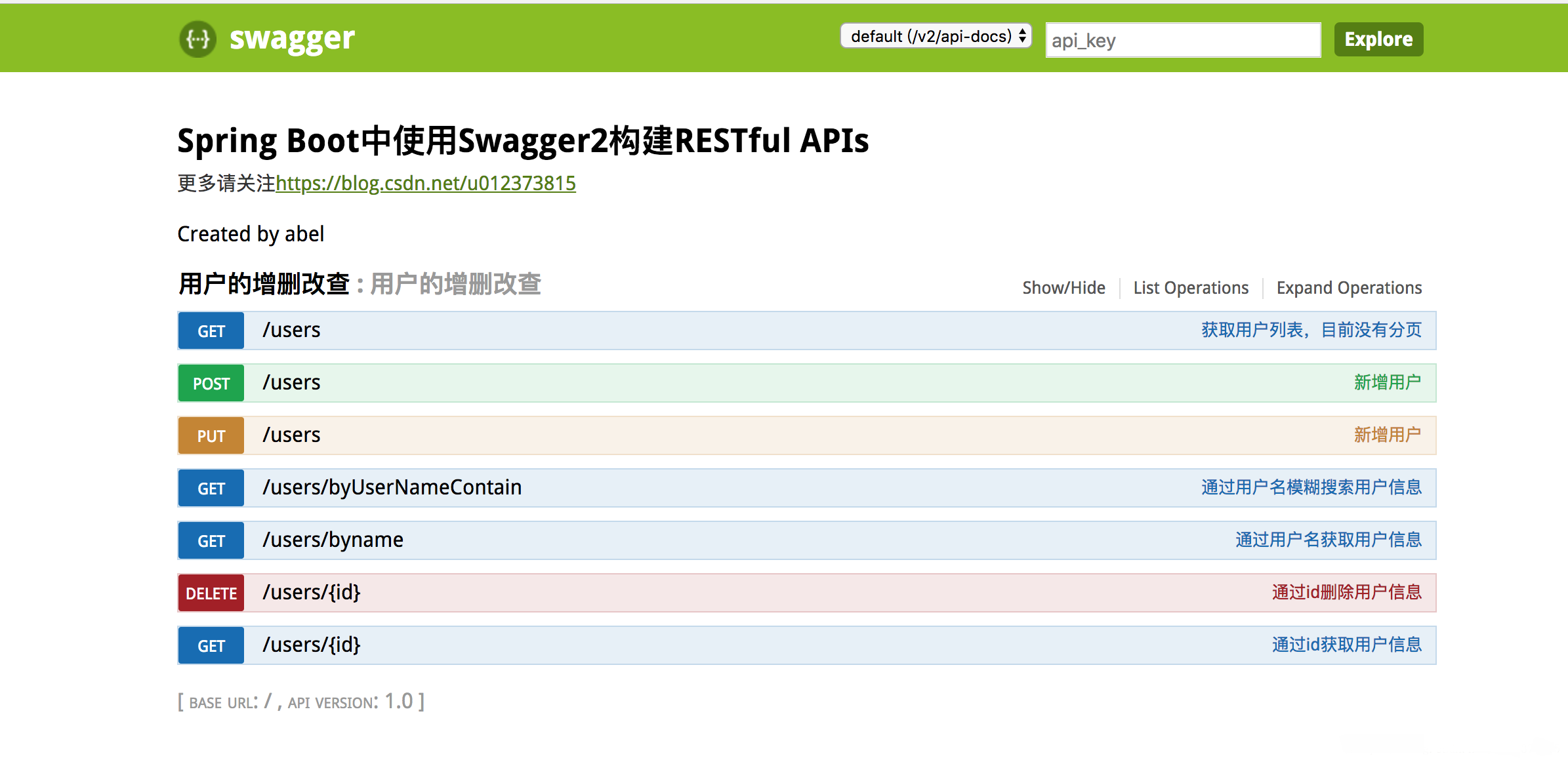
然后我们打开查询所有用户的api 看到api 内容
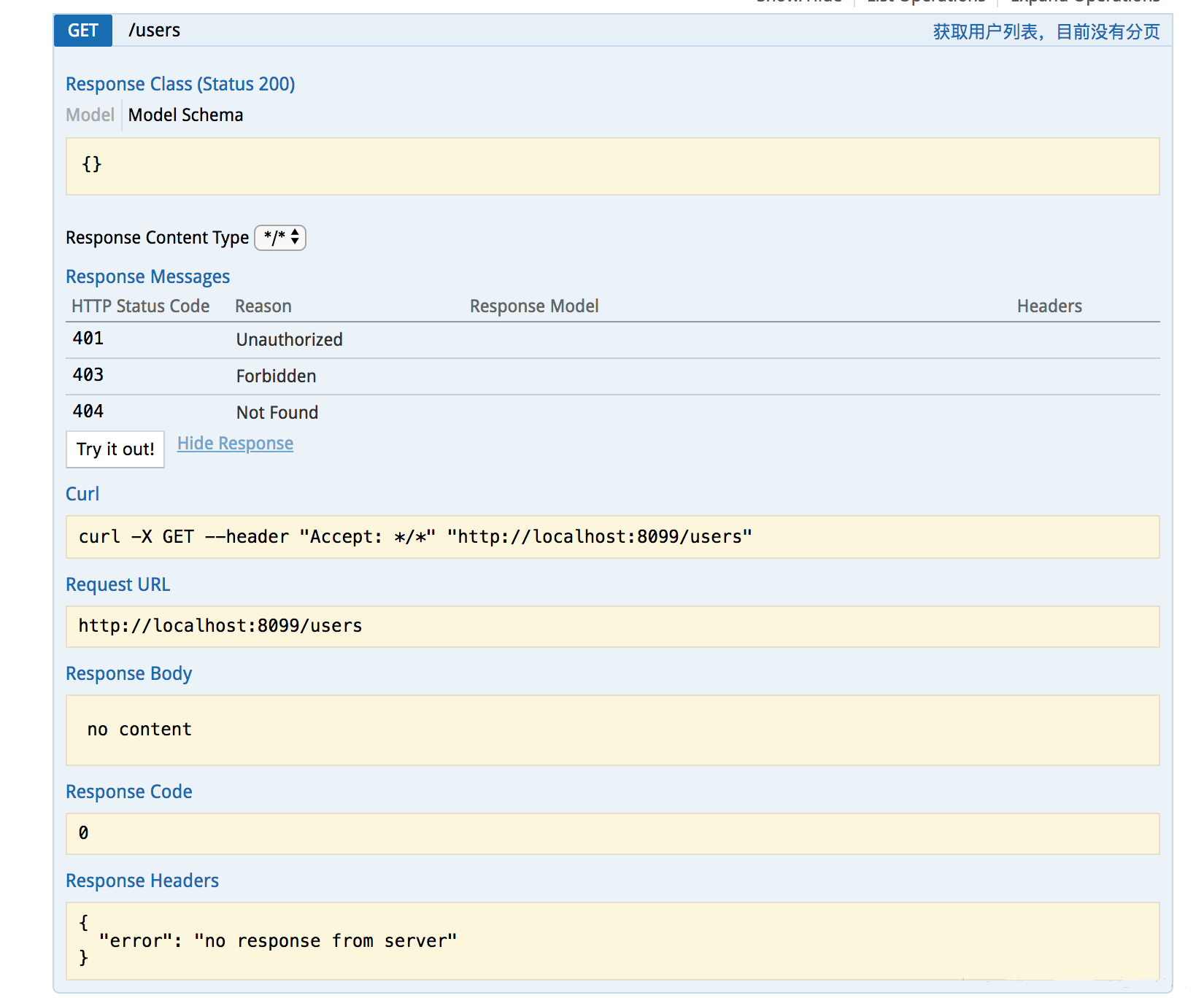
然后在服务器运行的状态下点击 try it out 测试查询功能
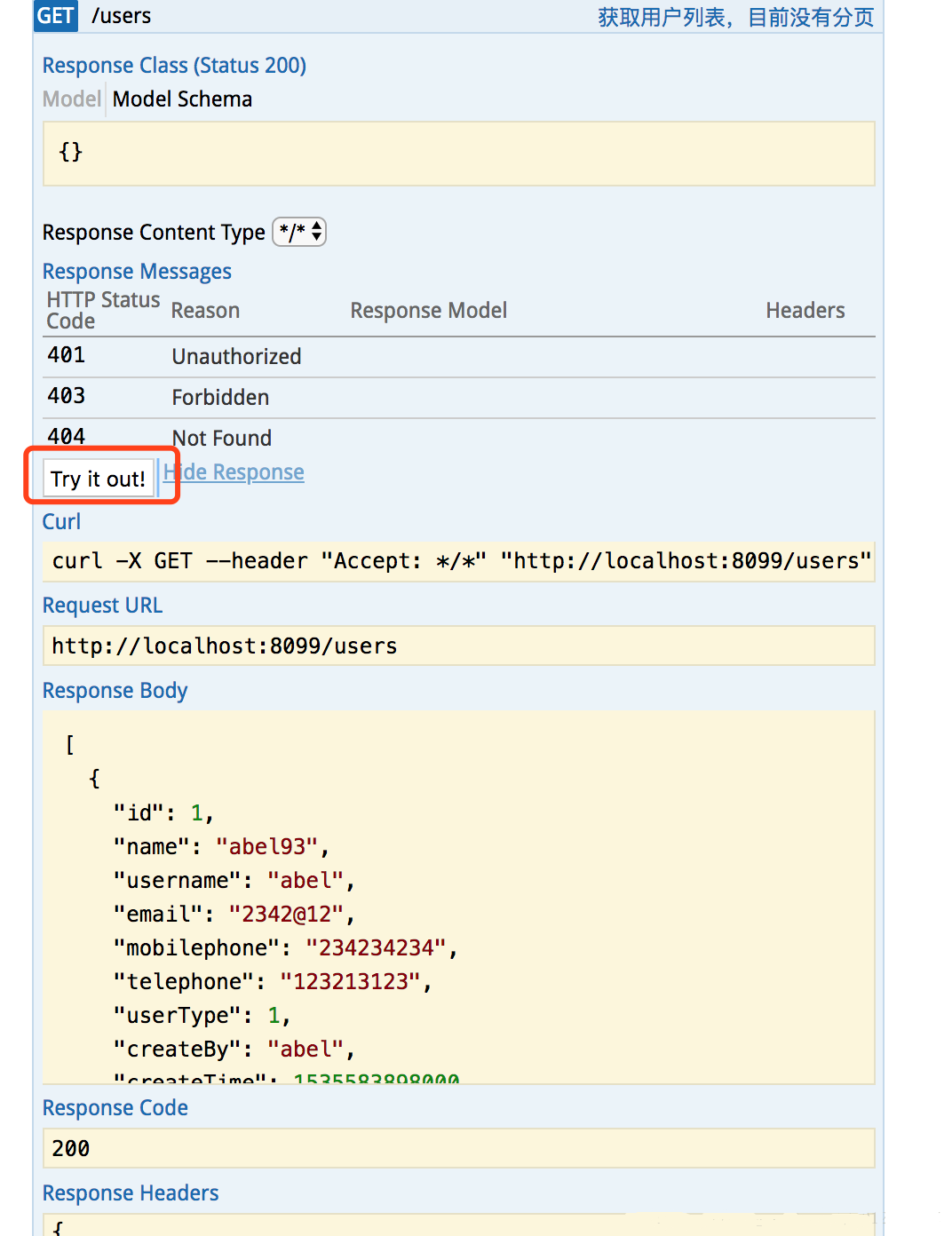
接着打开新增的api 查看
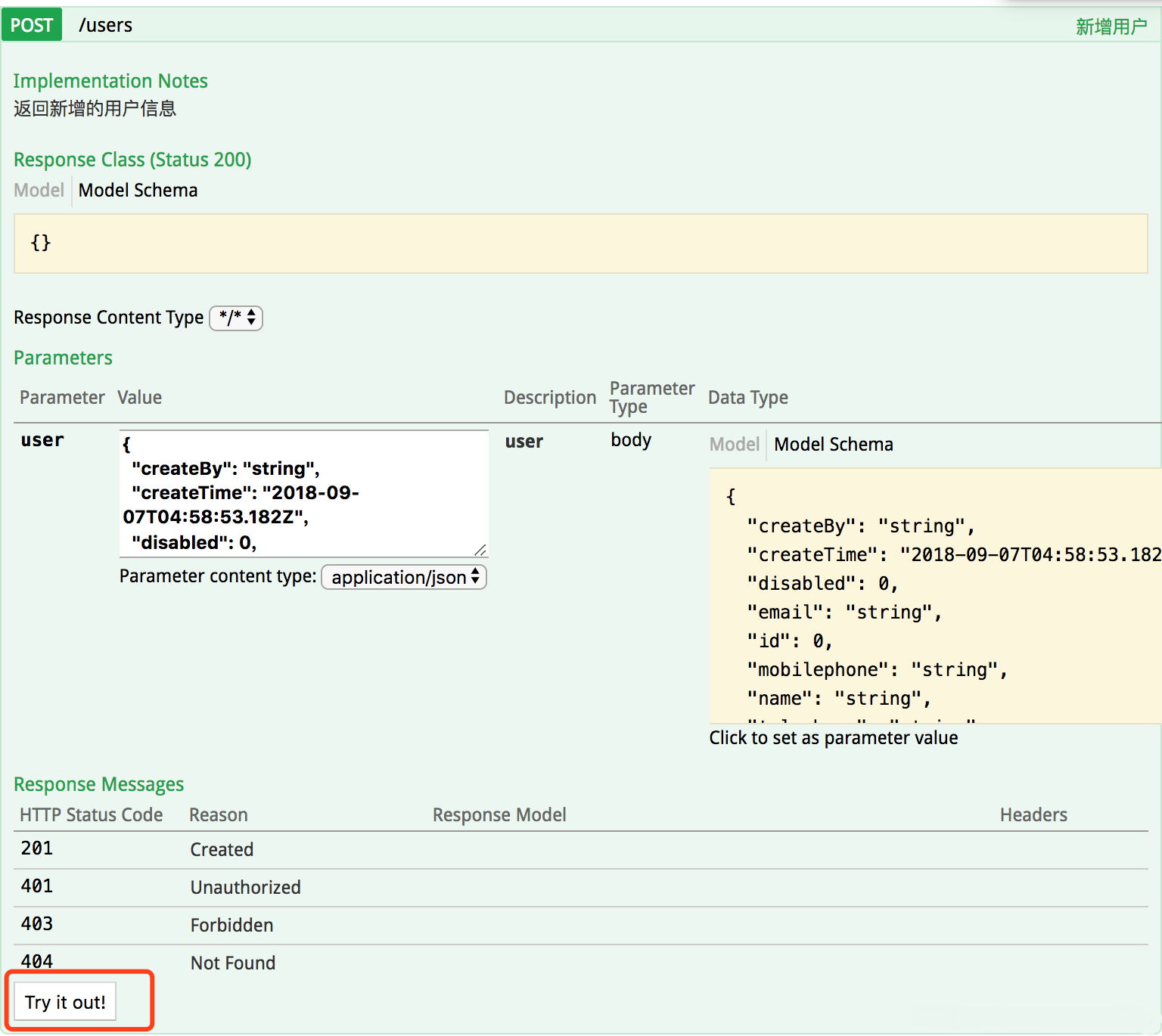
好了这个就是自动生成的api 效果。接下来我们就看怎么在我们的项目中使用swagger-ui 吧
springboot 集成 swagger -ui
1、添加依赖
<dependency>
<groupid>io.springfox</groupid>
<artifactid>springfox-swagger2</artifactid>
<version>2.2.2</version>
</dependency>
<dependency>
<groupid>io.springfox</groupid>
<artifactid>springfox-swagger-ui</artifactid>
<version>2.2.2</version>
</dependency>
2、编写配置文件
在application 同级目录新建 swagger2 文件
package com.abel.example;
import org.springframework.context.annotation.bean;
import org.springframework.context.annotation.configuration;
import springfox.documentation.builders.apiinfobuilder;
import springfox.documentation.builders.pathselectors;
import springfox.documentation.builders.requesthandlerselectors;
import springfox.documentation.service.apiinfo;
import springfox.documentation.spi.documentationtype;
import springfox.documentation.spring.web.plugins.docket;
import springfox.documentation.swagger2.annotations.enableswagger2;
/**
* created by yangyibo on 2018/9/7.
*/
@configuration
@enableswagger2
public class swagger2 {
/**
* 创建api应用
* apiinfo() 增加api相关信息
* 通过select()函数返回一个apiselectorbuilder实例,用来控制哪些接口暴露给swagger来展现,
* 本例采用指定扫描的包路径来定义指定要建立api的目录。
* @return
*/
@bean
public docket createrestapi() {
return new docket(documentationtype.swagger_2)
.apiinfo(apiinfo())
.select()
.apis(requesthandlerselectors.basepackage("com.abel.example.controller"))
.paths(pathselectors.any())
.build();
}
/**
* 创建该api的基本信息(这些基本信息会展现在文档页面中)
* 访问地址:http://项目实际地址/swagger-ui.html
* @return
*/
private apiinfo apiinfo() {
return new apiinfobuilder()
.title("spring boot中使用swagger2构建restful apis")
.description("更多请关注https://blog.csdn.net/u012373815")
.termsofserviceurl("https://blog.csdn.net/u012373815")
.contact("abel")
.version("1.0")
.build();
}
}
3、在controller上添加注解,自动生成api
注意:
package com.abel.example.controller;
import javax.servlet.http.httpservletrequest;
import java.util.map;
import com.abel.example.bean.user;
import io.swagger.annotations.*;
import org.apache.log4j.logger;
import org.springframework.beans.factory.annotation.autowired;
import org.springframework.http.httpstatus;
import org.springframework.http.responseentity;
import org.springframework.stereotype.controller;
import org.springframework.web.bind.annotation.*;
import com.abel.example.service.userservice;
import com.abel.example.util.commonutil;
@controller
@requestmapping(value = "/users")
@api(value = "用户的增删改查")
public class usercontroller {
@autowired
private userservice userservice;
/**
* 查询所有的用户
* api :localhost:8099/users
* @return
*/
@requestmapping(method = requestmethod.get)
@responsebody
@apioperation(value = "获取用户列表,目前没有分页")
public responseentity<object> findall() {
return new responseentity<>(userservice.listusers(), httpstatus.ok);
}
/**
* 通过id 查找用户
* api :localhost:8099/users/1
* @param id
* @return
*/
@requestmapping(value = "/{id}", method = requestmethod.get)
@responsebody
@apioperation(value = "通过id获取用户信息", notes="返回用户信息")
public responseentity<object> getuserbyid(@pathvariable integer id) {
return new responseentity<>(userservice.getuserbyid(long.valueof(id)), httpstatus.ok);
}
/**
* 通过spring data jpa 调用方法
* api :localhost:8099/users/byname?username=xxx
* 通过用户名查找用户
* @param request
* @return
*/
@requestmapping(value = "/byname", method = requestmethod.get)
@responsebody
@apiimplicitparam(paramtype = "query",name= "username" ,value = "用户名",datatype = "string")
@apioperation(value = "通过用户名获取用户信息", notes="返回用户信息")
public responseentity<object> getuserbyusername(httpservletrequest request) {
map<string, object> map = commonutil.getparametermap(request);
string username = (string) map.get("username");
return new responseentity<>(userservice.getuserbyusername(username), httpstatus.ok);
}
/**
* 通过spring data jpa 调用方法
* api :localhost:8099/users/byusernamecontain?username=xxx
* 通过用户名模糊查询
* @param request
* @return
*/
@requestmapping(value = "/byusernamecontain", method = requestmethod.get)
@responsebody
@apiimplicitparam(paramtype = "query",name= "username" ,value = "用户名",datatype = "string")
@apioperation(value = "通过用户名模糊搜索用户信息", notes="返回用户信息")
public responseentity<object> getusers(httpservletrequest request) {
map<string, object> map = commonutil.getparametermap(request);
string username = (string) map.get("username");
return new responseentity<>(userservice.getbyusernamecontaining(username), httpstatus.ok);
}
/**
* 添加用户啊
* api :localhost:8099/users
* @param user
* @return
*/
@requestmapping(method = requestmethod.post)
@responsebody
@apimodelproperty(value="user",notes = "用户信息的json串")
@apioperation(value = "新增用户", notes="返回新增的用户信息")
public responseentity<object> saveuser(@requestbody user user) {
return new responseentity<>(userservice.saveuser(user), httpstatus.ok);
}
/**
* 修改用户信息
* api :localhost:8099/users
* @param user
* @return
*/
@requestmapping(method = requestmethod.put)
@responsebody
@apimodelproperty(value="user",notes = "修改后用户信息的json串")
@apioperation(value = "新增用户", notes="返回新增的用户信息")
public responseentity<object> updateuser(@requestbody user user) {
return new responseentity<>(userservice.updateuser(user), httpstatus.ok);
}
/**
* 通过id删除用户
* api :localhost:8099/users/2
* @param id
* @return
*/
@requestmapping(value = "/{id}", method = requestmethod.delete)
@responsebody
@apioperation(value = "通过id删除用户信息", notes="返回删除状态1 成功 0 失败")
public responseentity<object> deleteuser(@pathvariable integer id) {
return new responseentity<>(userservice.removeuser(id.longvalue()), httpstatus.ok);
}
}
注解含义:
@api:用在类上,说明该类的作用。 @apioperation:注解来给api增加方法说明。 @apiimplicitparams : 用在方法上包含一组参数说明。 @apiimplicitparam:用来注解来给方法入参增加说明。 @apiresponses:用于表示一组响应 @apiresponse:用在@apiresponses中,一般用于表达一个错误的响应信息 code:数字,例如400 message:信息,例如"请求参数没填好" response:抛出异常的类 @apimodel:描述一个model的信息(一般用在请求参数无法使用@apiimplicitparam注解进行描述的时候) @apimodelproperty:描述一个model的属性
注意:@apiimplicitparam的参数说明:
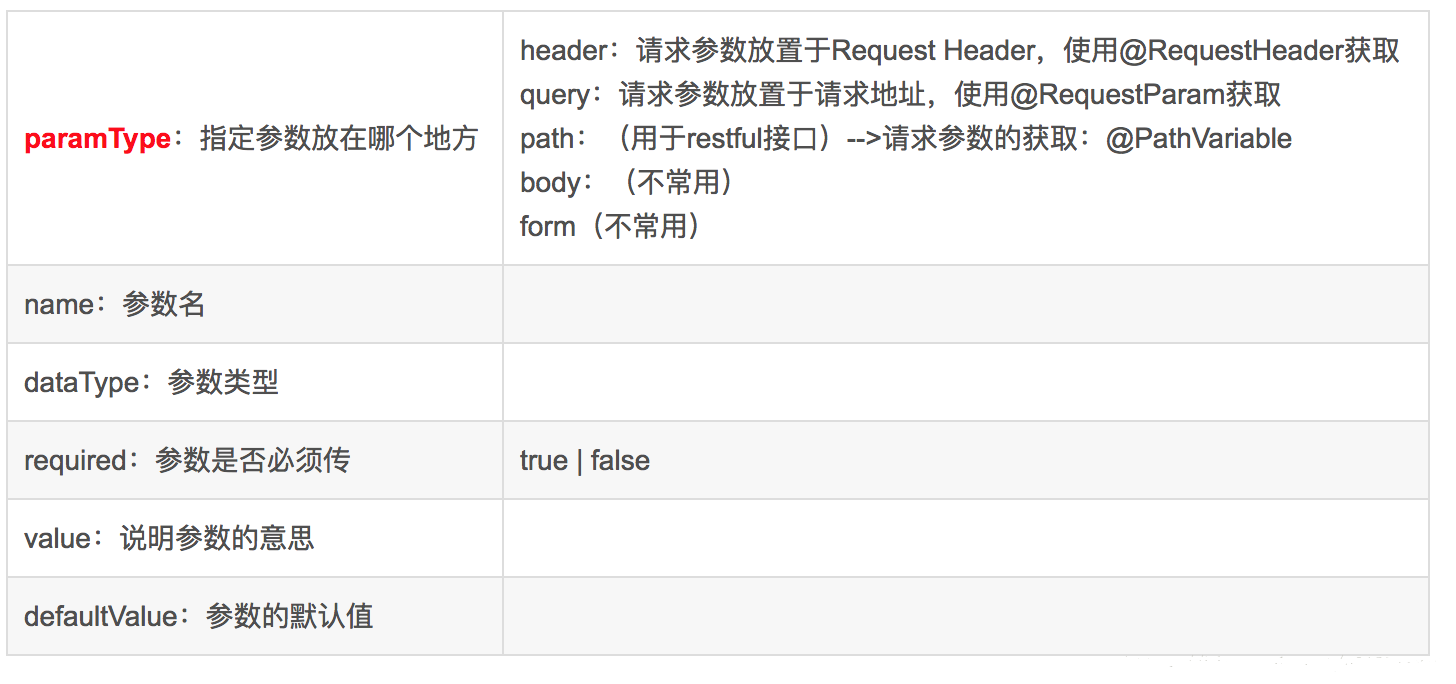
paramtype会直接影响程序的运行期,如果paramtype与方法参数获取使用的注解不一致,会直接影响到参数的接收。
4、启动项目效果图:
服务器启动后访问 http://localhost:8099/swagger-ui.html 效果如下
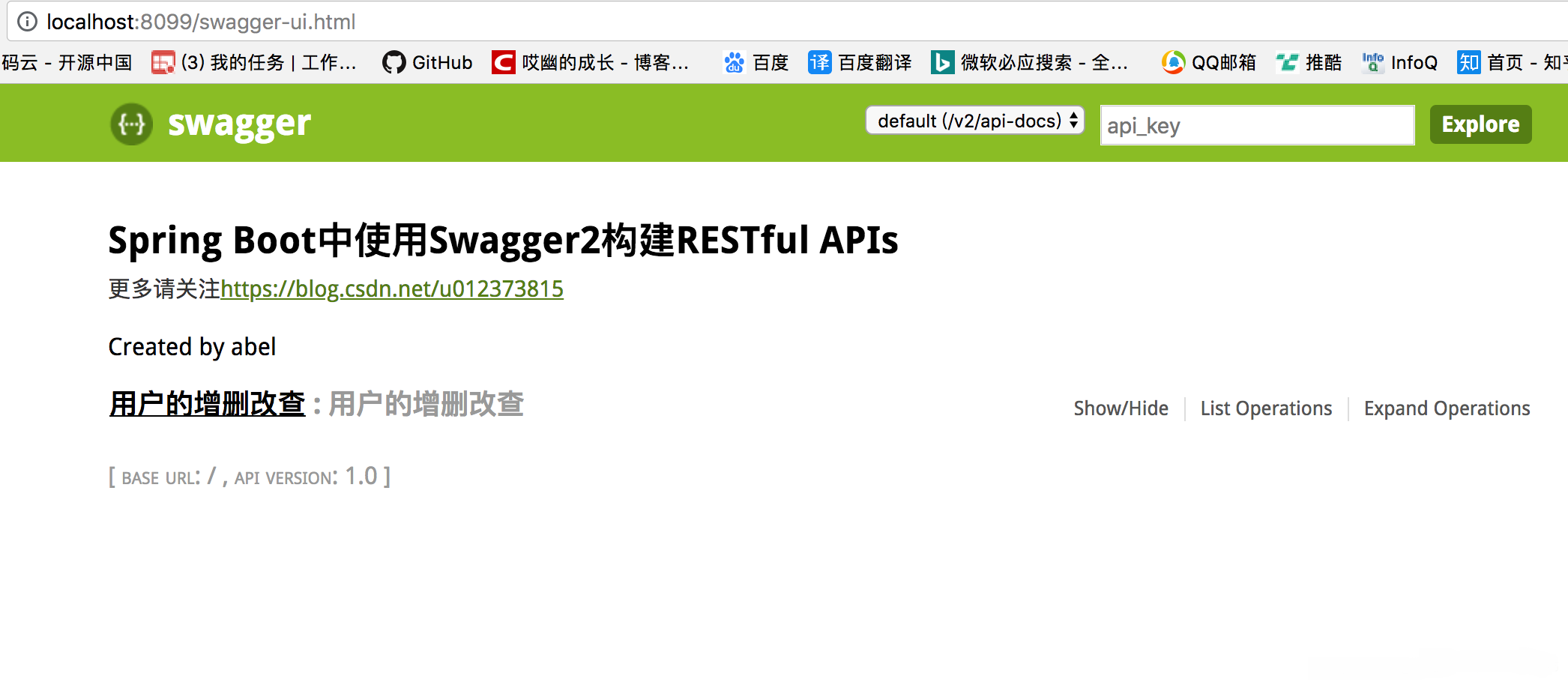
点击查看效果
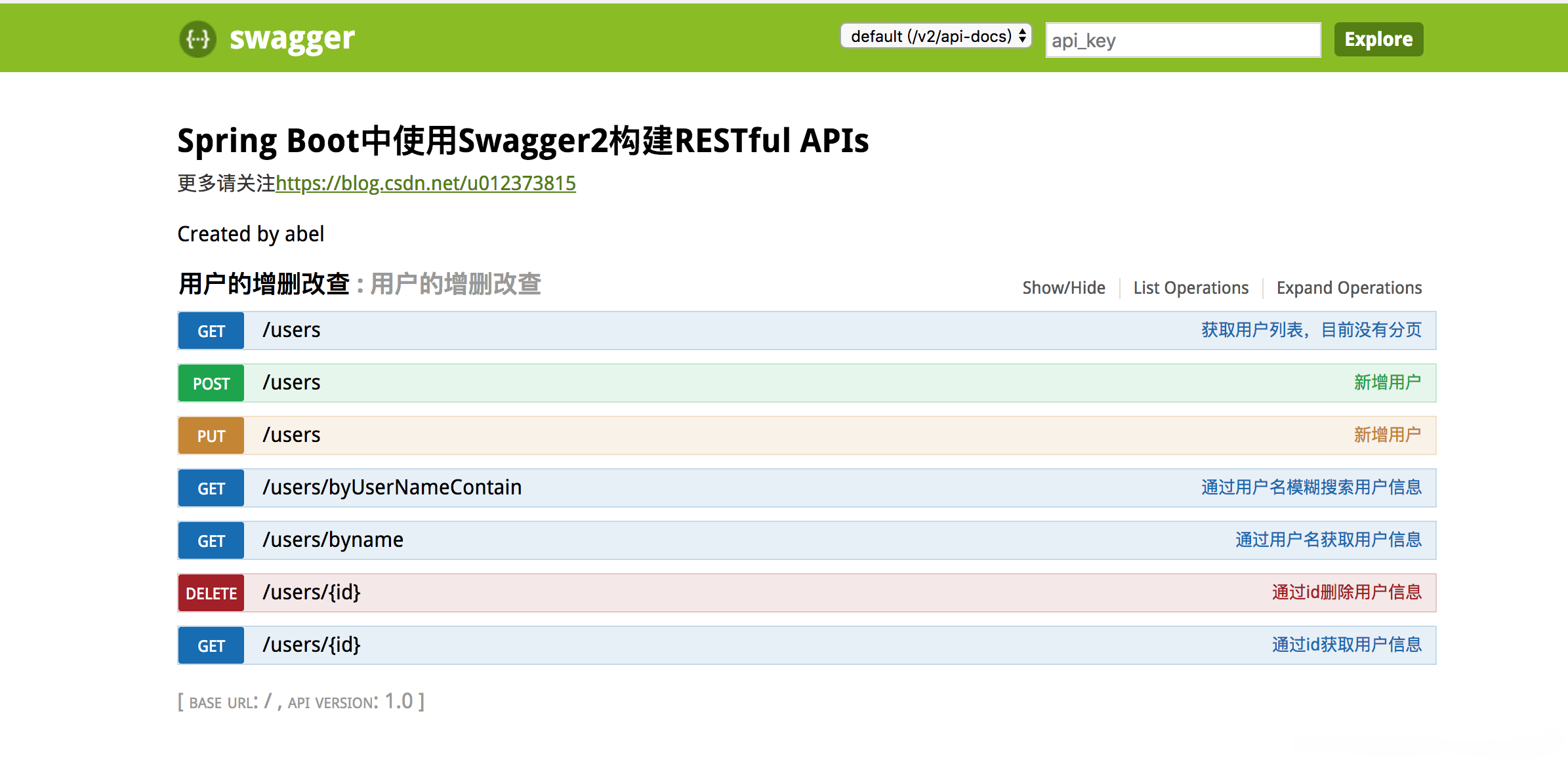
本文项目全部代码:https://github.com/527515025/springboot/tree/master/springboot-swagger-ui
总结
以上就是这篇文章的全部内容了,希望本文的内容对大家的学习或者工作具有一定的参考学习价值,谢谢大家对服务器之家的支持。如果你想了解更多相关内容请查看下面相关链接
原文链接:https://blog.csdn.net/u012373815/article/details/82685962














